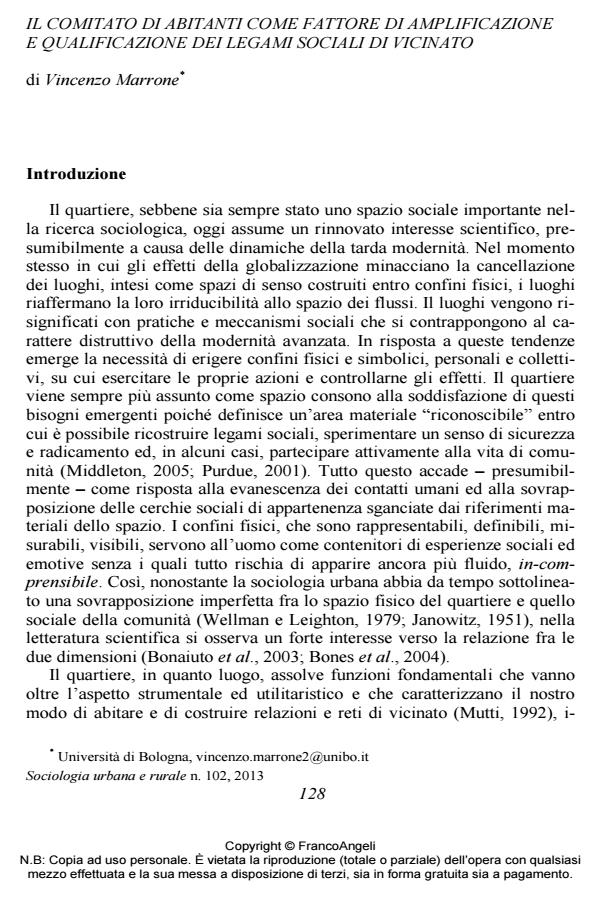The Role of the Neighborhood Committee to the Social Relationship and Sense of Security Perception
Journal title SOCIOLOGIA URBANA E RURALE
Author/s Vincenzo Marrone
Publishing Year 2013 Issue 2013/102
Language Italian Pages 15 P. 128-142 File size 452 KB
DOI 10.3280/SUR2013-102009
DOI is like a bar code for intellectual property: to have more infomation
click here
Below, you can see the article first page
If you want to buy this article in PDF format, you can do it, following the instructions to buy download credits

FrancoAngeli is member of Publishers International Linking Association, Inc (PILA), a not-for-profit association which run the CrossRef service enabling links to and from online scholarly content.
In the last decades some urban and architectural planning theories, as the new urbanism, have been focusing on the sense of community, security and social capital achievement starting from the design of housing and neighborhood solutions. The paper focuses on a comparative analysis between two similar planned neighbourhoods built on the new urbanism principles. The research findings show that the social dynamics and the sense of security perception are associated to the inhabitant committee presence more than the architectural and urban form.
Keywords: Neighborhood Attachment, New Urbanism, Neighborhood Committee, Sense of Security, Social Cohesion, Mixed Method
Vincenzo Marrone, Il comitato di abitanti come fattore di amplificazione e qualificazione dei legami sociali di vicinato in "SOCIOLOGIA URBANA E RURALE" 102/2013, pp 128-142, DOI: 10.3280/SUR2013-102009